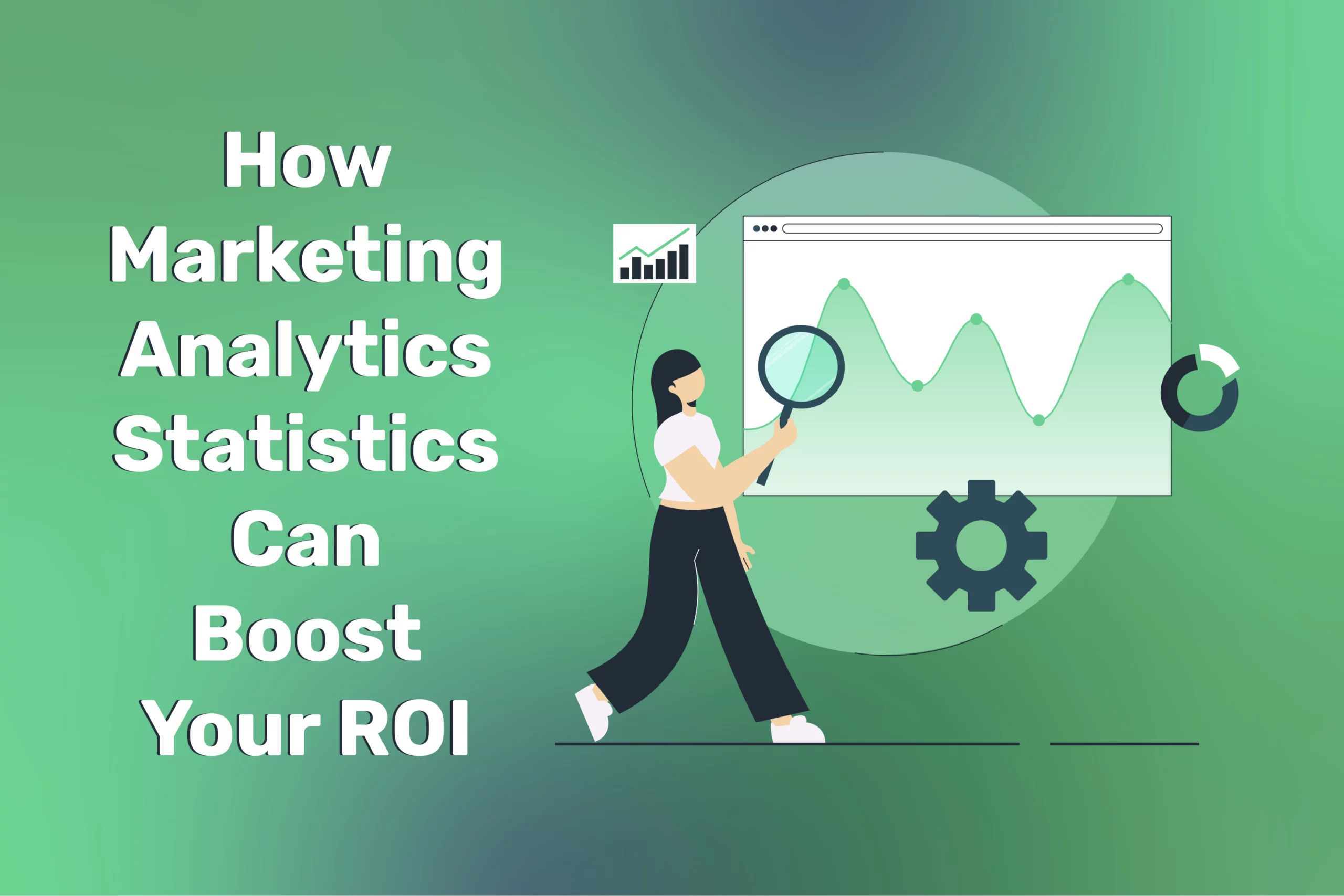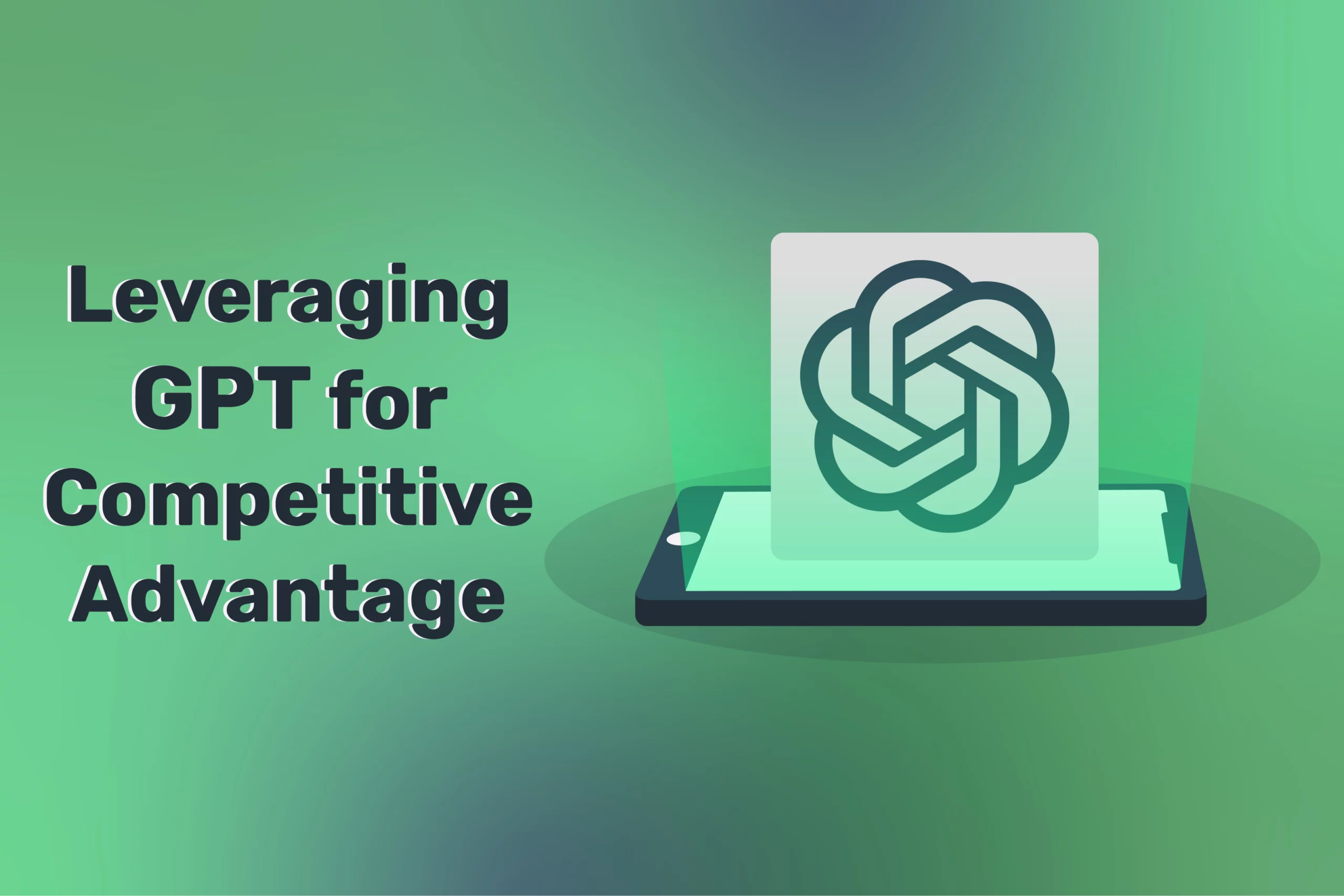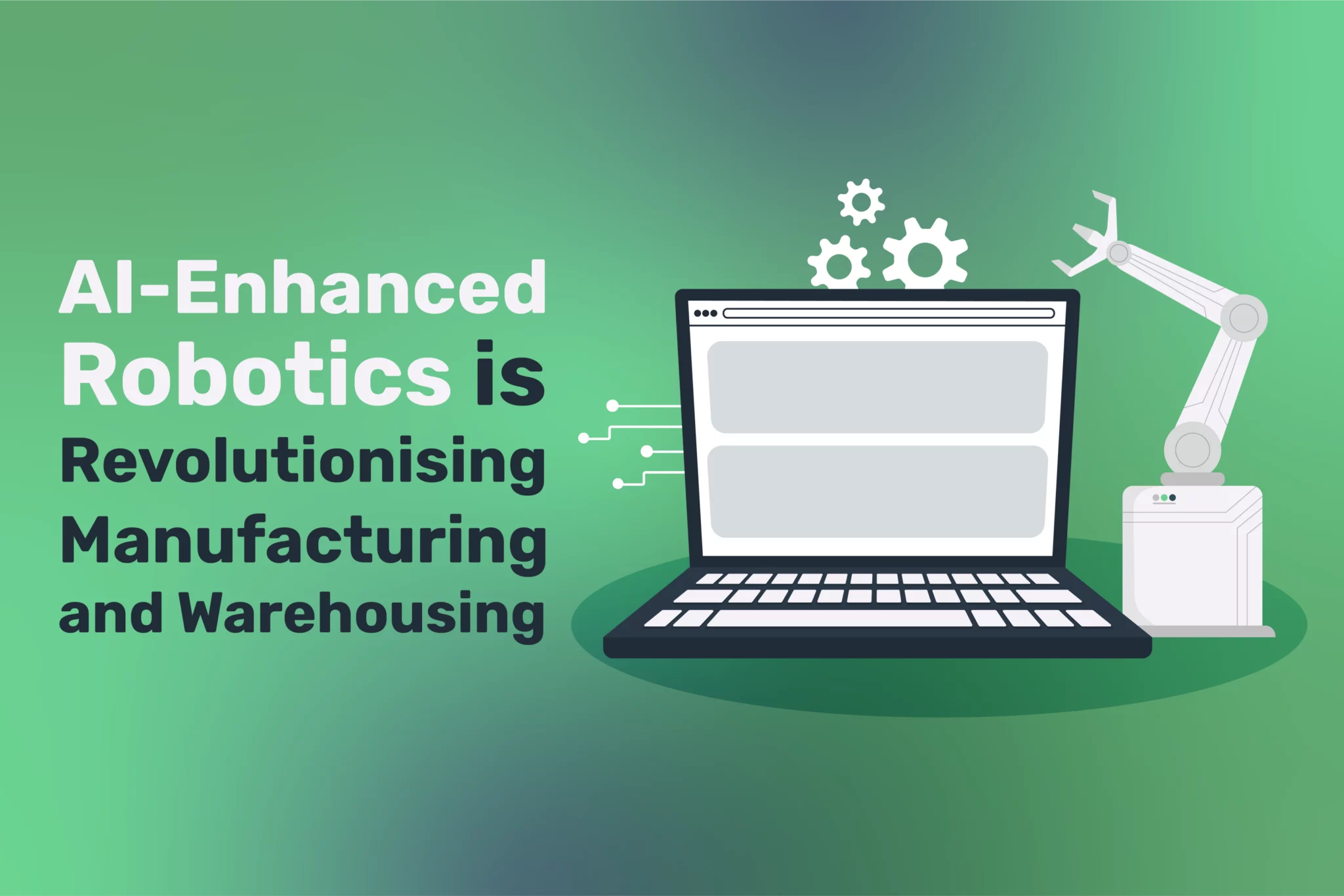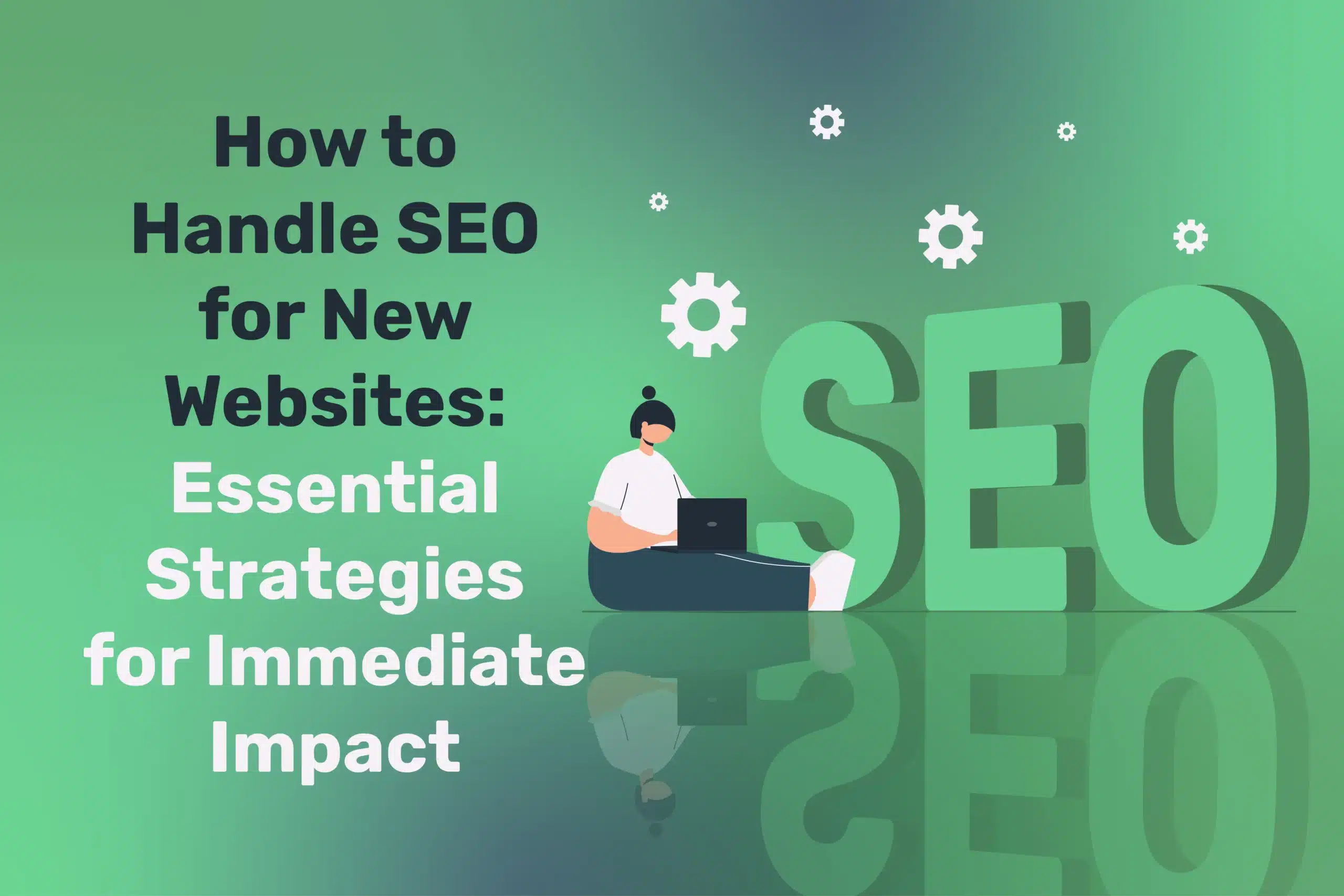
Elevate Your Strategy: AI Automation in Digital Transformation
Table of Contents
Across nearly every industry, businesses are grappling with the urgent need to modernise their operations, shift to digital-first strategies, and stay relevant in a rapidly evolving marketplace. This is the essence of digital transformation: moving beyond outdated processes to fully leverage contemporary technologies (cloud computing, data analytics, AI, etc.) and reshaping how a company operates, interacts with customers, and competes.
Yet, the statistics are eye-opening: roughly 90% of organisations are undertaking some form of digital transformation, but 70% of these initiatives fail to achieve their objectives.
The transformative element which often makes the difference is AI automation—using Artificial Intelligence to automate processes that are typically manual, inefficient, or painfully slow. Whether it’s handling reams of data, generating personalised customer interactions, or augmenting human teams with predictive insights, AI can be the catalyst that propels businesses to the next level. However, technology alone isn’t enough: transformation demands cultural change, a clear strategy, leadership buy-in, and ongoing refinement.
In this article, we’ll examine:
- What digital transformation really entails (beyond buzzwords).
- The key role of AI and automation in modernising operations.
- Pitfalls to avoid (and why so many transformations fail).
- Best practices (from aligning tech with strategy to training staff).
- How ProfileTree can help companies navigate transformation effectively.
“When you embed AI automation into a holistic transformation strategy—rather than treating it as a bolt-on—you unlock new capabilities at speed and scale. That agility is vital for staying competitive today,” notes Ciaran Connolly, Director of ProfileTree.
Understanding Digital Transformation
Digital transformation goes well beyond purchasing the latest app or hosting solution. It’s about a fundamental shift in how a business creates value, how employees collaborate, and how customers are served.
More Than Just New Software
At its core, transformation means:
- Re-evaluating Processes: Identifying inefficiencies (paper-based approvals, siloed data, repetitive tasks) and automating or redesigning them for maximum efficiency.
- Adopting a Digital-First Mindset: Ensuring web, mobile, social, and AI channels integrate seamlessly into the customer experience and internal workflows.
- Cultivating a Change-Ready Culture: Encouraging continuous learning, experimentation, and comfort with iterative improvements.
- Leveraging Data: Building analytics and reporting into everyday decisions—backed by real-time metrics rather than gut feeling.
When done right, digital transformation boosts customer satisfaction, lowers operational costs, and often opens paths to new services or revenue streams. If done poorly, it becomes a patchwork of incompatible tools or half-adopted initiatives, leading to confusion and staff resistance.
Why It Matters
In an era where over 90% of consumers research products online before purchasing, an outdated or cumbersome digital presence can alienate prospects. Meanwhile, industries face disruptors using data analytics, e-commerce, and automation to deliver faster, cheaper, and more personalised offerings. Failing to adapt invites obsolescence.
Additionally, transformation fosters internal efficiency. Processes that once took days or manual labour can be streamlined—like digitising forms, automating invoice approvals, or using remote collaboration. This reduces time to market and helps weather crises (like a pandemic) by swiftly pivoting to online operations or remote work.
Statistically, businesses completing digital transformation initiatives typically see a 20–30% improvement in efficiency and often report double-digit increases in revenue tied to better customer engagement.
The Critical Role of AI Automation
If digital transformation is the umbrella concept, AI automation is often the prime mover. AI excels at tasks involving large datasets, pattern recognition, and repeated decision-making—areas where humans are either too slow or too inconsistent.
Why AI Is a Catalyst
By integrating AI:
- Repetitive, High-Volume Tasks: Data entry, report generation, or email sorting can be handed off to AI or robotic process automation (RPA) bots, drastically reducing errors and freeing staff.
- Decision Support: Machine learning analyses complex variables (like customer churn predictors or manufacturing line anomalies), generating actionable insights that humans might miss.
- Customer Interaction at Scale: AI chatbots and virtual assistants can handle basic enquiries 24/7 and escalate only the complex ones, thus enhancing responsiveness.
- Personalisation: E-commerce or streaming platforms rely on AI to recommend products or content specifically tailored to user preferences, boosting satisfaction and sales.
This synergy—automation + AI—not only speeds operations but can also produce brand-new offerings. For instance, a company might introduce an AI-based subscription model that automatically replenishes supplies for customers or an AI-driven platform that offers real-time advisory services.
Tangible Benefits
- Cost Savings: Automating labour-intensive tasks is often cheaper than scaling human teams, especially for repetitive roles.
- Efficiency and Accuracy: AI rarely tires or loses focus, maintaining consistency. For instance, an AI system scanning invoices can achieve nearly 100% accuracy if well-trained.
- Employee Satisfaction: By offloading routine drudgery, staff can focus on strategic, creative, or relationship-based work, increasing their engagement.
- Scalability: As demand grows—be it more website traffic or spikes in order volume—AI solutions can scale far more quickly than hiring and training large new teams.
Statistically, studies suggest that AI can automate up to 45% of work activities in some sectors, though the actual figure depends heavily on job composition. The net effect is that businesses can grow without a corresponding balloon in overhead.
Common Pitfalls in Transforming with AI
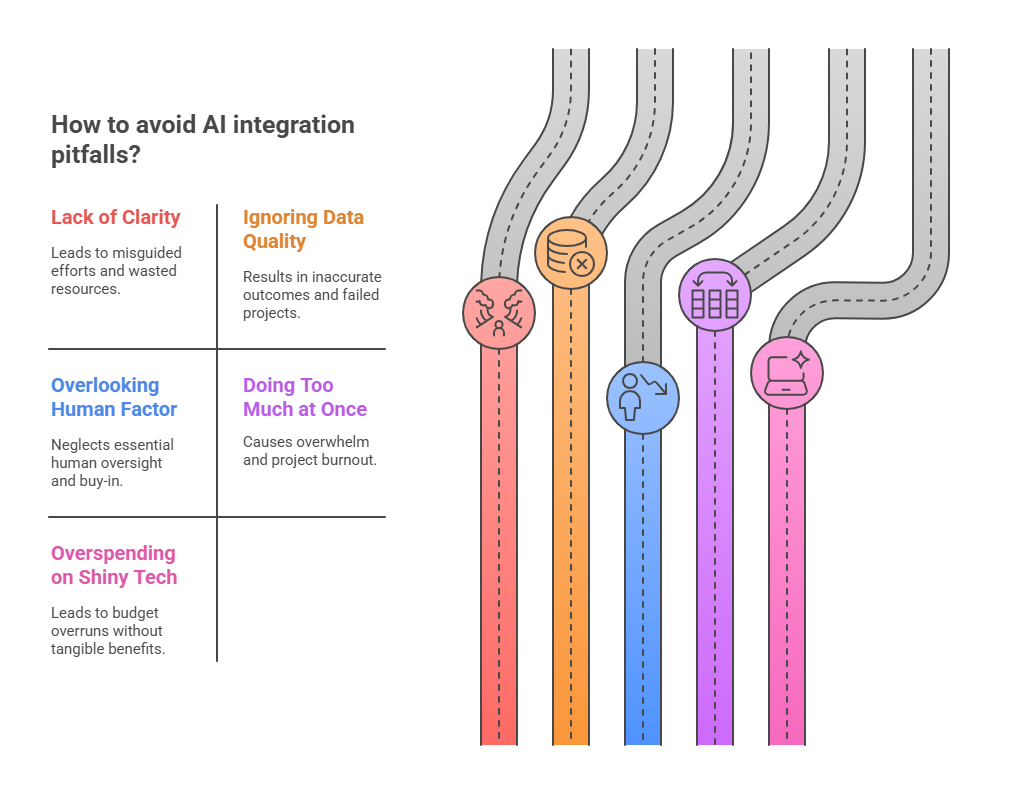
As businesses rush to integrate AI into their operations, many stumble into familiar traps that can derail their transformation efforts. Understanding and avoiding these pitfalls is essential for any business aiming to unlock AI’s full potential.
Lack of Clarity or Strategy
One major reason up to 70% of digital transformations fail is the absence of clear goals. If a company invests in AI “because competitors do,” with no specific outcome (e.g., reduce claims processing by 30%), it risks implementing disjointed solutions that fix nothing. Clarity around metrics—like cost reduction, improved lead conversion, or higher customer satisfaction—guides the entire project.
Ignoring Data Quality
AI’s accuracy lives or dies by data. If your CRM is riddled with duplicates, your inventory logs incomplete, or your customer records outdated, the AI’s outputs become unreliable. Many transformations overlook data cleansing or robust data governance, leading to disappointing results. Ensuring you have clean, relevant data is non-negotiable before rolling out advanced AI models.
Overlooking the Human Factor
Employee resistance is another culprit for stalled transformation. People fear job displacement or distrust new systems. Companies that fail to communicate openly and train staff end up with low adoption rates. Additionally, some tasks can’t or shouldn’t be fully automated—particularly those requiring nuanced human judgement or empathy. A balanced approach is key.
Doing Too Much at Once
Attempting an enterprise-wide overhaul in one go often leads to chaos. A better method is piloting AI in a focused, high-impact area, learning from successes/failures, and then expanding. Iteration fosters internal buy-in and helps refine best practices.
Overspending on Shiny Tech
Some organisations buy top-tier AI platforms without matching them to actual needs or internal capacity. Expensive licences or custom builds can drain budgets while delivering minimal ROI if the underlying processes or staff readiness aren’t addressed. The “build vs. buy” question must be carefully analysed.
“When we start a transformation project, we advise focusing on the ‘why’ before the ‘how.’ If you skip alignment with business goals, even the best AI solutions can fizzle out,” warns Ciaran Connolly.
Best Practices for AI-Driven Digital Transformation
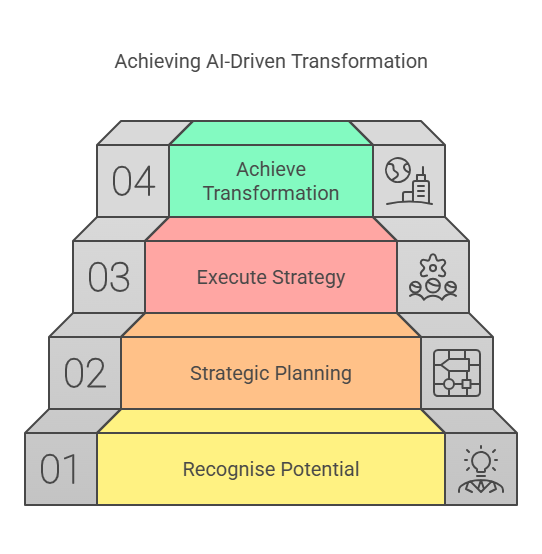
Embarking on an AI-driven digital transformation journey holds the promise of revolutionising business operations, but success hinges on strategic execution.
Define Clear Objectives and KPIs
From the outset, articulate measurable targets: cut order processing time by 40%, reduce call centre volume by 25%, or boost cross-sell revenue by 15%.
These goals anchor your AI automation scope. As you roll out solutions, track performance metrics and refine if you see shortfalls. This data-driven approach keeps the project outcome-focused rather than tech-focused.
Start with a Pilot or Proof of Concept
Avoid tackling every process at once. Identify a singular bottleneck—like invoice reconciliation, customer enquiry triaging, or forecasting—and launch a pilot solution. This approach:
- Minimises risk and upfront costs.
- Builds confidence among staff when they see success.
- Lets you refine data pipelines or governance before scaling.
Upon success, replicate the model across other departments or refine it for more complex tasks.
Ensure Data Readiness and Governance
Before training an AI model, audit your data. Consolidate it from various departments, remove duplicates, handle missing fields, and define who is responsible for data accuracy. Implement frameworks like:
- Master Data Management (MDM): So that every system references the same customer or product IDs.
- Security and Access Controls: Particularly important for personal or sensitive data.
- Lifecycle Policies: Clear rules on data retention, archiving, or deletion in compliance with GDPR or local laws.
Engage Stakeholders Early
Change management is crucial. Explain to employees how automation will offload tedious tasks, letting them focus on strategic roles. Provide training or workshops on how to interpret AI outputs or intervene when needed. Keep communication lines open: if staff feel blindsided, they may sabotage or ignore new systems.
Maintain Human Oversight
For tasks that significantly impact customers—like credit approvals, insurance claims, or medical diagnoses—ensuring a human-in-the-loop approach is best practice. This includes:
- Manual Reviews for exceptional cases or potential biases.
- Transparent Explanations if AI denies a user’s application so they understand the rationale.
- Ethical Guidelines to prevent discriminatory patterns or irresponsible data usage.
Adopt an Agile, Iterative Mindset
Implementation isn’t a one-and-done event. AI models need continuous monitoring for model drift (where they lose accuracy over time due to evolving patterns). Collect feedback from users (both employees and customers), refine processes, and roll out updates in short sprints.
“We find the iterative approach far more successful than ‘big bang’ rollouts. It ensures real, measurable progress—and fosters an internal culture of experimentation and learning,” says Ciaran Connolly.
How ProfileTree Helps Accelerate Successful Transformations
Businesses pursuing digital transformation with AI often lack the resources or expertise to do it alone. That’s where ProfileTree can guide you. Our approach includes:
- Strategic Assessment: We evaluate your existing digital presence, workflows, data readiness, and staff competencies.
- Roadmap Development: We outline step-by-step transformation priorities aligned with tangible goals—like boosting sales channels or improving customer self-service.
- Technical Implementation: Whether building a custom AI solution, integrating a chatbot, or automating back-end processes, we ensure seamless deployment.
- Training and Change Management: We offer hands-on workshops so employees understand and trust the new systems.
- Ongoing Optimisation: Post-launch, we monitor analytics, gather feedback, and enhance the solution for continuous improvements.
We believe in forging a holistic strategy—your website design, SEO, data analytics, and AI adoption shouldn’t be siloed but interconnected for maximum synergy. Our team brings deep expertise in web development, AI, process automation, and digital marketing, giving clients an end-to-end partner for transformation.
Looking Ahead: Future Trends in Digital Transformation

As technology continues evolving, we can expect:
- AI-First Business Models: From subscription-based deliveries triggered by real-time usage data to 100% autonomous supply chain operations.
- Industry-Specific AI: More refined, domain-trained AI in healthcare, finance, agriculture, etc., delivering advanced insights out of the box.
- Augmented Workforce: The “human + AI” approach will deepen, with AI handling large data tasks or routine interactions while people provide creativity, empathy, and final judgement.
- Low-Code/No-Code Tools: More user-friendly automation platforms enabling even non-technical staff to build or tweak AI-driven workflows.
- Focus on Ethical/Green Tech: Regulations will tighten around data privacy, bias, and sustainability. Businesses that adopt “responsible AI” will build stronger reputations.
Staying ahead demands constant adaptation and learning. Digital transformation is never “finished”, but an ongoing journey requiring a mindset shift across your organisation.
Embrace AI Automation to Propel Your Transformation
Digital transformation is about leveraging technology to revolutionise how you deliver value, operate efficiently, and evolve with market trends. AI automation is central to that journey, accelerating innovation, freeing employees for more impactful work, and personalising your interactions at scale. Yet success hinges on strategy, data readiness, and employee empowerment just as much as on the tools themselves.
Rather than seeing AI as a future luxury, it’s now an imperative—particularly in a marketplace shaped by consumer impatience, razor-thin margins, and rapidly shifting demands. Approaching AI automation with clear goals, a pilot-based approach, continuous training, and ethical oversight paves the way for a transformation that truly sticks.
If you’re ready to harness AI’s power in your digital transformation—be it modernising operations, building a robust online presence, or training your team—ProfileTree stands ready to guide you. Book a call with our experts to chart a path that aligns technology with your business vision, ensuring you stay relevant and resilient in tomorrow’s economy.
